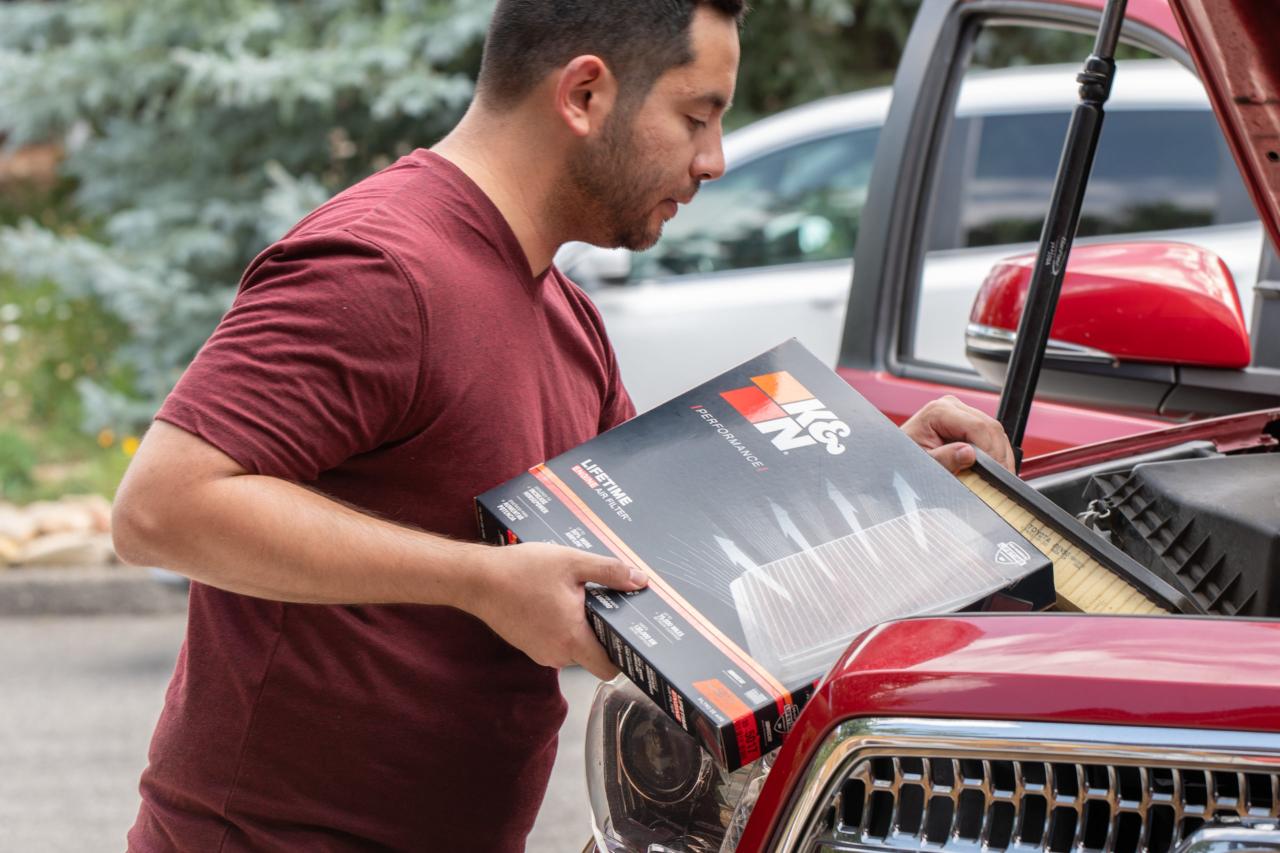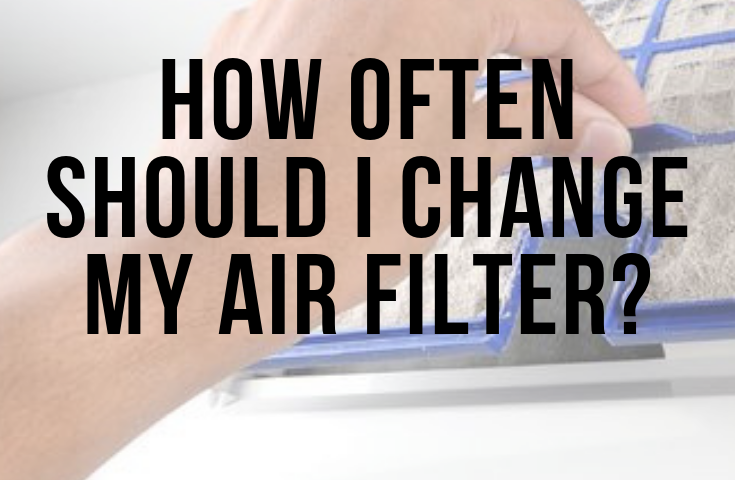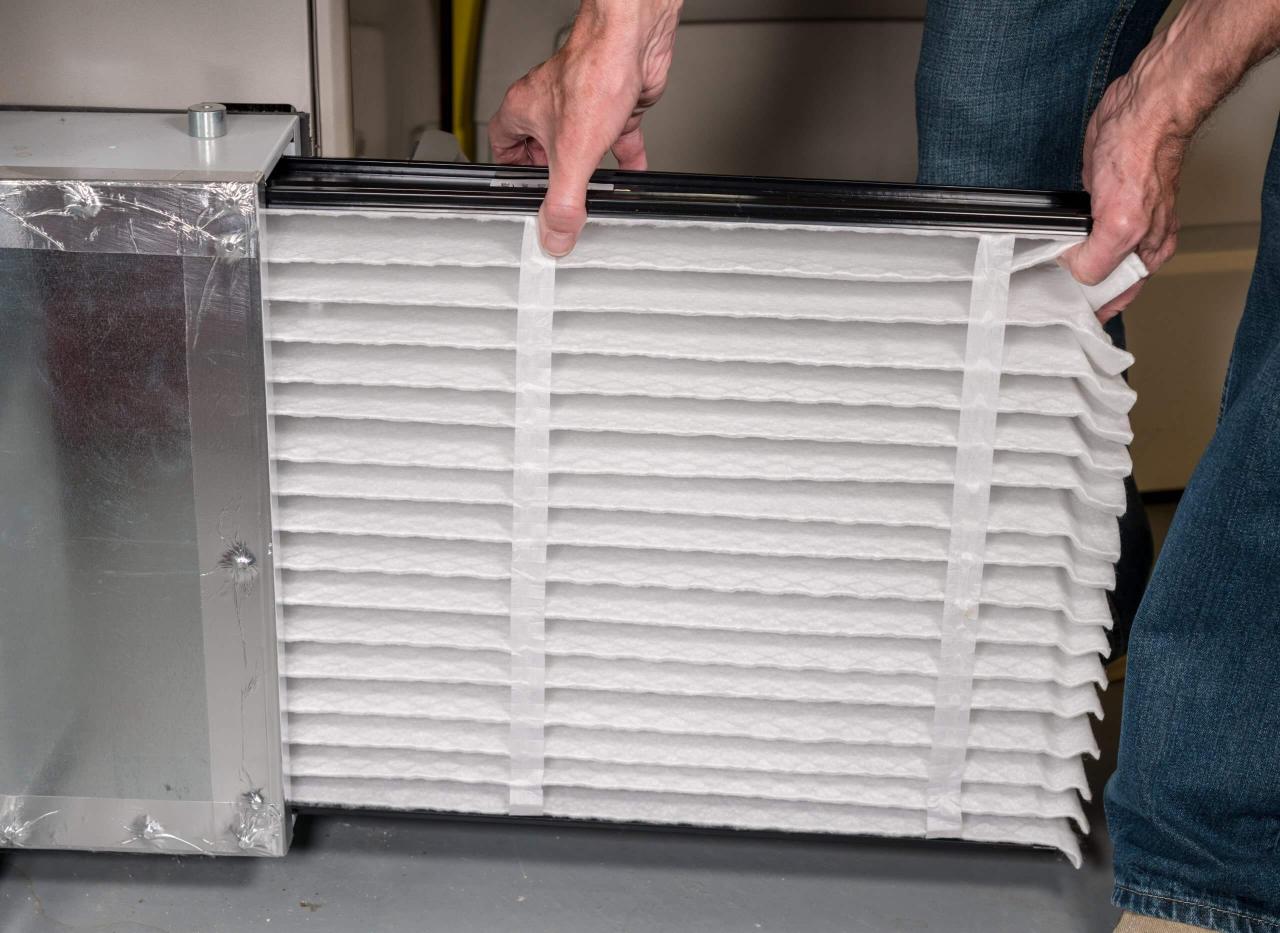
- Importance of Air Filter Replacement
- Factors Influencing Air Filter Replacement Frequency: How Often Should You Change Your Air Filter
- General Recommendations for Air Filter Replacement
- Maintaining Air Filters for Optimal Performance
- Choosing the Right Air Filter for Your Needs
- Epilogue
- FAQ Overview
How often should you change your air filter? The answer isn’t as simple as you might think. While a general rule of thumb exists, the ideal replacement frequency depends on various factors, including your home’s size, the type of filter you use, and even the presence of pets. Understanding these factors is crucial for maintaining clean indoor air and protecting your family’s health.
Neglecting to change your air filter regularly can lead to a build-up of dust, pollen, mold spores, and other pollutants. This can trigger allergies, asthma, and even respiratory problems. It’s not just about the air you breathe; a dirty air filter can also strain your HVAC system, leading to reduced efficiency and higher energy bills.
Importance of Air Filter Replacement

Air filters are essential components of your HVAC system, acting as a barrier against airborne contaminants and pollutants. They play a crucial role in maintaining indoor air quality, protecting your health and well-being.
Health Implications of Neglecting Air Filter Replacement
Neglecting air filter replacement can have significant health consequences, especially for individuals with respiratory conditions like asthma, allergies, or sensitivities. When air filters become clogged, they can no longer effectively remove pollutants from the air. This can lead to a buildup of allergens, dust mites, mold spores, pet dander, and other irritants.
- Respiratory Problems: Breathing in contaminated air can trigger respiratory issues, including coughing, wheezing, shortness of breath, and even asthma attacks.
- Allergic Reactions: Airborne allergens can trigger allergic reactions, such as sneezing, runny nose, itchy eyes, and skin rashes.
- Increased Risk of Infections: Contaminated air can harbor viruses, bacteria, and other pathogens, increasing the risk of infections, particularly for children, the elderly, and individuals with weakened immune systems.
Common Pollutants Trapped by Air Filters
Air filters effectively trap a wide range of airborne pollutants, including:
- Dust: Fine particles of dirt, soil, and other materials that can irritate the respiratory system.
- Pollen: Tiny particles released by plants that can trigger allergic reactions.
- Pet Dander: Tiny flakes of skin shed by pets, a common allergen.
- Mold Spores: Microscopic fungi that can cause respiratory problems and allergic reactions.
- Smoke: Particles from burning materials, such as cigarettes, wood, and wildfires.
- Volatile Organic Compounds (VOCs): Chemicals released from paints, cleaning products, and other materials, which can cause headaches, nausea, and respiratory problems.
Factors Influencing Air Filter Replacement Frequency: How Often Should You Change Your Air Filter

The ideal air filter replacement frequency depends on several factors that affect how quickly the filter accumulates dust, allergens, and other pollutants. These factors determine the filter’s effectiveness in cleaning the air and its overall lifespan.
Air Filter Type
The type of air filter used significantly influences its lifespan and how often it needs replacing. Different filters have varying levels of efficiency and durability.
- HEPA filters are highly effective at trapping small particles, including dust mites, pollen, and pet dander. However, they tend to have a shorter lifespan than other types, requiring replacement every 3-6 months, depending on usage.
- Pleated filters offer a good balance of efficiency and affordability. They have a longer lifespan than HEPA filters, typically lasting 6-12 months, but their effectiveness in capturing smaller particles is lower.
- Fiberglass filters are the least expensive and have the longest lifespan, often lasting up to a year. However, they are less effective at filtering fine particles and may not be suitable for homes with allergy sufferers.
Household Size and Pet Ownership
The number of people and pets in a household significantly impacts air filter usage. A larger household with more occupants and pets generates more dust, dander, and other airborne particles, leading to faster filter clogging and a need for more frequent replacement.
Location
The location of a home can influence the frequency of air filter replacement. Homes in urban areas with high levels of air pollution require more frequent filter changes than those in rural areas with cleaner air. Additionally, homes near busy roads or construction sites experience higher levels of dust and particulate matter, leading to faster filter clogging.
General Recommendations for Air Filter Replacement
While there’s no one-size-fits-all answer to how often you should replace your air filter, a general guideline can help you maintain optimal indoor air quality. Factors like the type of filter, the environment, and usage patterns influence the replacement frequency.
Recommended Replacement Intervals
Understanding the lifespan of different air filter types is crucial for maintaining clean air. The following table provides a general overview of recommended replacement intervals for common filter types:
| Filter Type | Typical Lifespan (Months) | Usage Factors | Notes |
|---|---|---|---|
| Fiberglass | 1-3 | Heavy dust, pet dander, pollen | Least effective at trapping fine particles. |
| Pleated | 2-4 | Moderate dust, pollen, pet dander | More effective than fiberglass filters. |
| HEPA (High-Efficiency Particulate Air) | 3-6 | Allergies, asthma, smoke, dust mites | Can trap particles as small as 0.3 microns. |
| Electrostatic | 3-6 | Dust, pollen, pet dander | Uses electrostatic charges to attract and trap particles. |
| Carbon | 2-4 | Odors, gases, VOCs | Used to remove gases and odors from the air. |
Visual Cues for Filter Replacement
Beyond the recommended intervals, visual cues can help you determine when it’s time to change your air filter. Look for the following signs:
* Discoloration: A noticeably darker color indicates dust and debris accumulation.
* Dust Buildup: Visible dust or dirt on the filter surface suggests it’s no longer effectively trapping particles.
* Reduced Airflow: If you notice a decrease in airflow from your HVAC system, it could be a sign of a clogged filter.
* Increased Noise: A louder-than-usual HVAC system might indicate a blocked filter restricting airflow.
Maintaining Air Filters for Optimal Performance
Maintaining air filters is crucial for extending their lifespan and ensuring optimal performance of your HVAC system. By implementing proper maintenance practices, you can minimize dust accumulation, improve airflow, and reduce energy consumption.
Cleaning Reusable Air Filters, How often should you change your air filter
Cleaning reusable air filters is essential for maintaining their effectiveness. Here’s a step-by-step guide for cleaning reusable air filters:
- Remove the filter from the HVAC system. Ensure that the power to the HVAC system is switched off before removing the filter.
- Inspect the filter for any visible damage or debris. Replace the filter if it’s torn or excessively dirty.
- Rinse the filter with water. Use a garden hose or a sink with running water to remove loose dirt and debris. Avoid using harsh chemicals or detergents that could damage the filter material.
- Allow the filter to air dry completely. Place the filter in a well-ventilated area, away from direct sunlight, to dry thoroughly before reinstalling it.
- Reinstall the filter in the HVAC system. Ensure the filter is properly seated and aligned in the filter slot.
Storing Air Filters
Proper storage of clean and used air filters is important to prevent damage and contamination.
- Store clean filters in a sealed container or bag. This will help prevent dust and debris from accumulating on the clean filter.
- Store used filters in a sealed container or bag. This will prevent the spread of dust and allergens from the used filter.
- Label the filters with the date of cleaning or replacement. This will help you track the filter’s lifespan and ensure timely replacement.
Choosing the Right Air Filter for Your Needs
Selecting the appropriate air filter for your home is crucial for ensuring optimal air quality and achieving the desired level of protection against pollutants. With a wide range of air filters available, understanding their differences and choosing the right one for your specific needs is essential.
Types of Air Filters and Their Efficiency
The effectiveness of an air filter is measured by its ability to capture airborne particles, expressed as a Minimum Efficiency Reporting Value (MERV) rating. A higher MERV rating indicates a greater capacity to remove smaller particles.
- Basic Filters (MERV 1-4): These filters are typically made of fiberglass or cotton and are commonly found in HVAC systems. They primarily capture larger particles like dust, lint, and pet hair. However, they are less effective at removing smaller particles, including pollen, mold spores, and dust mites.
- Pleated Filters (MERV 5-8): These filters offer improved efficiency compared to basic filters. They are made of pleated paper or synthetic materials, providing more surface area for particle capture. Pleated filters can remove a wider range of particles, including pollen, pet dander, and some allergens.
- HEPA Filters (MERV 13-16): High-Efficiency Particulate Air (HEPA) filters are highly effective at capturing even the smallest particles, including bacteria, viruses, and dust mites. They are commonly used in air purifiers and can significantly improve indoor air quality for allergy sufferers and individuals with respiratory issues.
- Carbon Filters: These filters are designed to remove gases and odors from the air. They are often combined with other filter types, such as HEPA filters, to provide comprehensive air purification. Carbon filters are particularly useful for eliminating cooking odors, smoke, and VOCs (volatile organic compounds).
Epilogue

Keeping your air filter clean and functioning optimally is essential for a healthy home environment. By understanding the factors that influence replacement frequency, you can make informed decisions about when to change your filter and ensure clean, fresh air for everyone. Remember, regular maintenance is key to maximizing the benefits of your air filter and promoting a healthier lifestyle.
FAQ Overview
What are the signs that my air filter needs to be changed?
Look for visible signs like dust buildup, discoloration, or a noticeable decrease in airflow. If your HVAC system is running louder than usual, it might be a sign of a clogged filter.
Can I clean reusable air filters instead of replacing them?
Yes, many reusable air filters can be cleaned and used again. Check the manufacturer’s instructions for the specific cleaning method.
How often should I change the air filter in my car?
Generally, car air filters should be replaced every 12,000 to 15,000 miles. However, this can vary depending on driving conditions and the type of filter.





